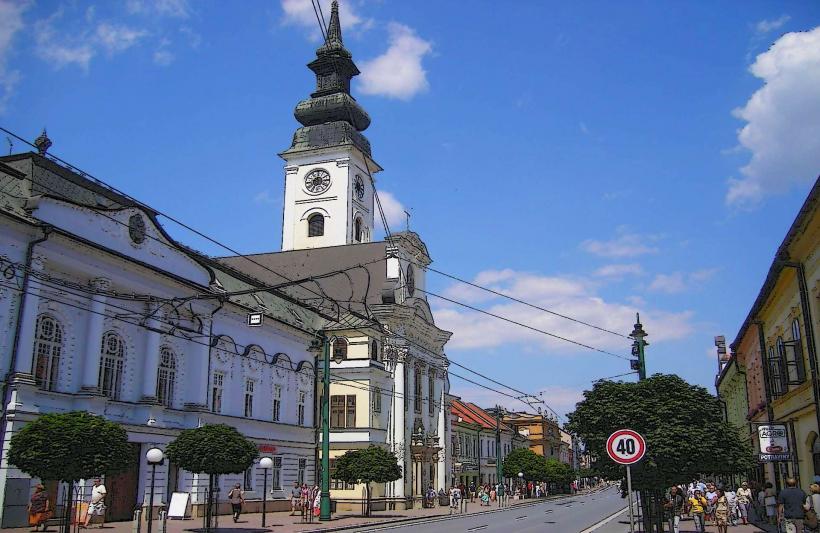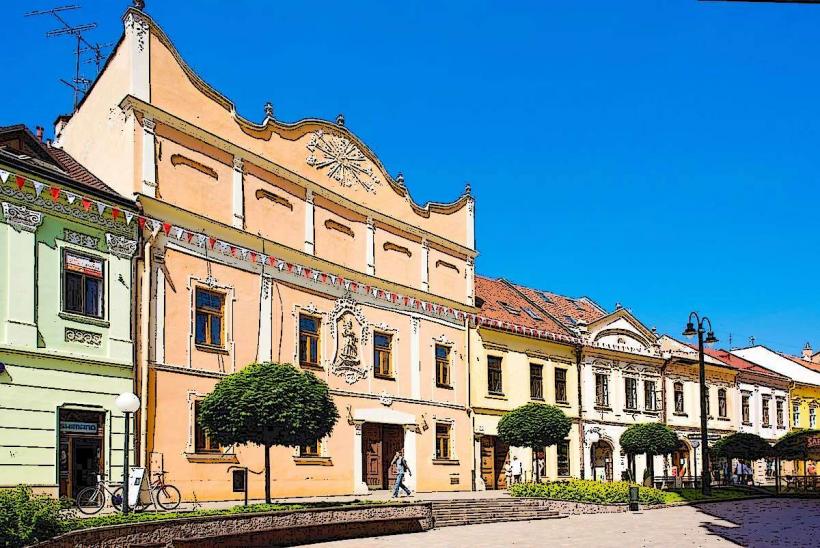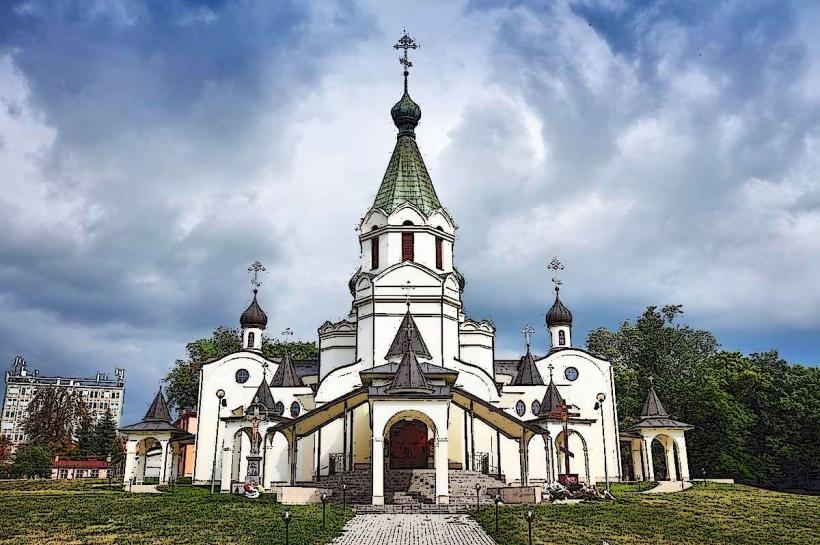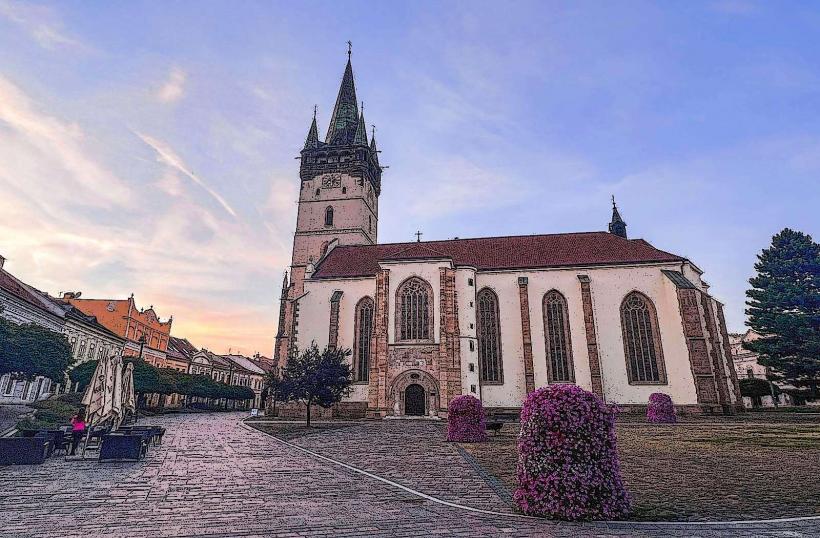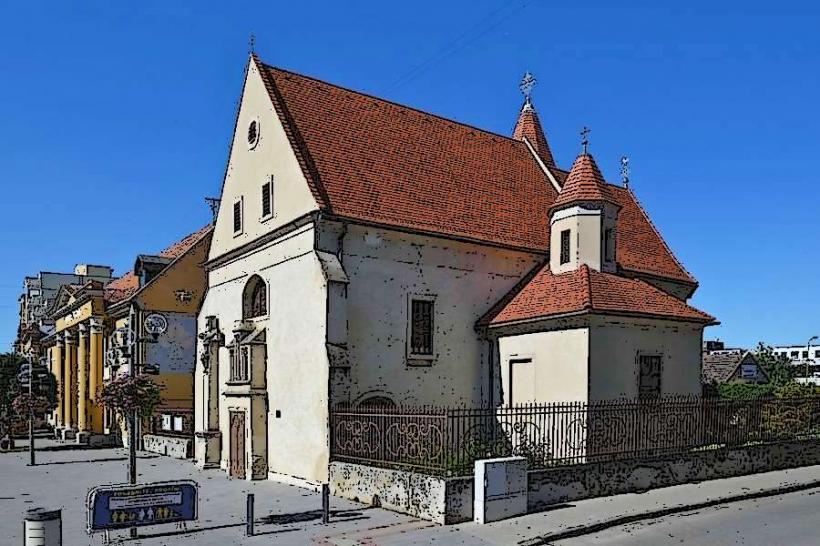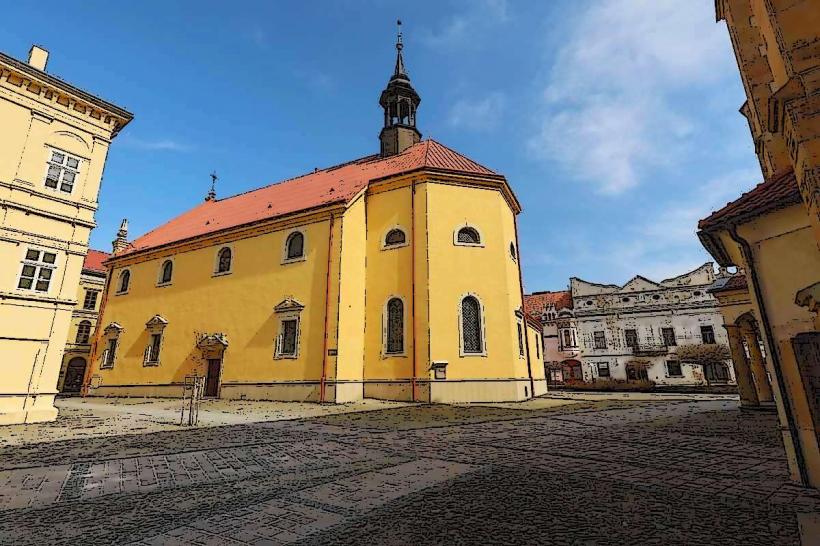Information
Landmark: Rakoci PalaceCity: Presov
Country: Slovakia
Continent: Europe
Rakoczi Palace in Prešov
Slovak Name: Rákociho palác
The Rakoczi Palace (Rákociho palác) is an important historical landmark located in Prešov, Slovakia. This Baroque-style palace is renowned for its architectural beauty and historical significance, and it reflects the region's rich noble heritage, particularly during the Rákoci family’s rule. Today, the palace serves as an important part of Prešov’s cultural landscape.
General Information
- Location: Prešov, Slovakia
- Architectural Style: Baroque
- Construction Period: Early 18th century
- Current Use: Museum and cultural venue
- Significance: The palace is a symbol of noble power and political history in the region, particularly during the time of the Rákoci family, who played a major role in the Hungarian War of Independence.
Historical Background
Origins and Construction:
- The Rakoczi Palace was built in the early 18th century during the Baroque period, a time of significant architectural and cultural development across Central Europe.
- It was commissioned by the influential Rákoci family, one of the most prominent noble families in the region at the time. The family played a crucial role in the Hungarian War of Independence and were known for their political and military influence.
Rákoci Family and Historical Context:
- The Rákoci family were key figures in Hungarian history, and the palace is a reminder of their status in the noble society. The Palace was linked to Prince Francis II Rákóczi, who led the Hungarian rebellion against the Habsburg Empire in the early 18th century.
- The Rákoci family were considered symbols of Hungarian resistance, and the palace in Prešov was a center of their activities.
Role as a Noble Residence:
- The Rakoczi Palace originally functioned as a noble residence, serving as a residence and administrative center for the Rákoci family during their rule over the region. It was used for hosting important guests, political meetings, and social events.
- It is said that during the early 18th century, the palace was a hub of political activity and diplomatic relations, playing a significant role in the region’s history.
Post-Rákoci Era:
- After the decline of the Rákoci family’s power in the 18th century, the palace continued to serve various functions, including being used for public purposes. Over time, it was repurposed and adapted to meet the needs of the growing city of Prešov.
Architectural Features
Baroque Style:
- The Rakoczi Palace is a prime example of Baroque architecture, characterized by elaborate decorations, symmetry, and grandeur.
- The building’s facade is adorned with intricate stuccoes, moldings, and decorative details typical of the Baroque period.
Interior Design:
- The interior of the palace is equally grand, with high ceilings, ornate stucco work, and baroque frescoes. The rooms are designed to impress, with rich furnishings and artwork reflecting the family’s wealth and influence.
- The palace features large salons, drawing rooms, and private chambers, many of which are preserved with their original architectural details.
Palace Layout:
- The Rakoczi Palace is designed around a central courtyard, which was once used for outdoor events and gatherings. The building’s facade faces the main street of Prešov, making it a prominent feature of the city’s architectural heritage.
Facade and Entrances:
- The palace has a symmetrical facade with several windows and entrances, reflecting the formal nature of the Baroque style. Columns and pilasters give the building a sense of verticality, while the large front door provides a grand entrance.
Current Use
Cultural Center:
- Today, the Rakoczi Palace serves as a museum and cultural center, offering visitors insight into the history of the Rákoci family, as well as the Baroque period and the cultural heritage of Prešov and the wider Slovak region.
- The museum houses exhibits related to the noble families, historical events, and artifacts from the Rákoci period.
Exhibitions and Events:
- The museum regularly hosts temporary exhibitions that showcase the history of the Rákoci family, as well as art collections and historical artifacts.
- It also serves as a venue for cultural events, including concerts, lectures, and theatrical performances, especially during the cultural season in Prešov.
Architectural Tours:
- The Rakoczi Palace is open to visitors who wish to explore its Baroque architecture and interior design. Guided tours are available, offering a detailed explanation of the building’s history and architectural features.
Visitor Information
Accessibility:
- The Rakoczi Palace is centrally located in Prešov’s Old Town, making it easily accessible from other city landmarks, cafes, and shops.
Opening Hours:
- The museum typically opens during the day, with extended hours during weekends or special events. It is recommended to check the official website or contact the museum for exact opening hours.
Admission Fees:
- There is usually a small admission fee to enter the museum, with discounted prices available for students, seniors, and group visits. Guided tours may have an additional fee.
Facilities:
- The museum has a small gift shop where visitors can purchase souvenirs, books, and replicas related to the Rákoci family and Prešov’s history.
- Restrooms and seating areas are also available for the comfort of visitors.
Nearby Attractions
- Prešov Old Town: The charming historical district featuring Renaissance and Baroque architecture, and the St. Nicholas Cathedral.
- St. George's Church: A medieval church dedicated to St. George, nearby with Romanesque and Gothic elements.
- Prešov City Museum: Exhibits on the local history and the development of Prešov over the centuries.
Significance
The Rakoczi Palace is a vital piece of Prešov’s heritage, reflecting the city’s rich Baroque architectural history and the noble heritage of the Rákoci family. Its continued use as a cultural center and museum makes it a valuable resource for anyone interested in the history, art, and culture of Prešov and the wider Slovak region. Visitors to the palace can appreciate both its historical significance and its ongoing role as a space for cultural enrichment.


